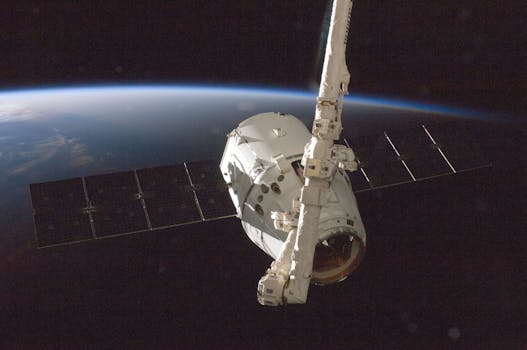
LEO Satellites: Revolutionizing Global Connectivity with WordPress
Low Earth Orbit (LEO) satellites are transforming the way we communicate and access information, and WordPress is at the forefront of this revolution. LEO satellites are a type of satellite that orbits the Earth at an altitude of around 160 to 2,000 kilometers, which is much lower than traditional geostationary satellites. This lower altitude allows for faster data transmission, lower latency, and more efficient communication.
How LEO Satellites Work
LEO satellites work by transmitting data to and from Earth-based stations, which are connected to the internet. The satellites use a range of frequencies, including Ka-band, Ku-band, and C-band, to transmit data at speeds of up to 1 Gbps. The data is then routed through the satellite constellation and back to Earth, where it is received by a ground station and transmitted to its final destination.
Benefits of LEO Satellites
The benefits of LEO satellites are numerous. They offer faster data transmission, lower latency, and more efficient communication than traditional satellites. They also provide global coverage, including in areas where traditional connectivity is limited or non-existent. Additionally, LEO satellites are more cost-effective and require less power to operate than traditional satellites.
WordPress and LEO Satellites
WordPress is at the forefront of the LEO satellite revolution, providing a range of tools and plugins that enable developers to build and deploy satellite-based connectivity solutions. With WordPress, developers can create custom satellite-based connectivity platforms, integrate satellite-based services into existing applications, and manage satellite-based data transmission. WordPress also provides a range of plugins and themes that are optimized for satellite-based connectivity, making it easier for developers to build and deploy satellite-based solutions.
Real-World Applications of LEO Satellites
LEO satellites have a range of real-world applications, including providing connectivity to remote and underserved communities, supporting emergency response and disaster relief efforts, and enabling IoT and M2M communication. They also provide a range of benefits for businesses, including improved communication, increased productivity, and enhanced customer experience.
Challenges and Limitations of LEO Satellites
While LEO satellites offer many benefits, they also have some challenges and limitations. One of the main challenges is interference from other satellites and terrestrial systems, which can impact signal quality and availability. Additionally, LEO satellites have a limited lifespan and must be replaced regularly, which can be costly and complex. Furthermore, the launch and deployment of LEO satellites require significant investment and infrastructure, which can be a barrier to entry for some organizations.
Future of LEO Satellites
The future of LEO satellites is exciting and promising. As technology continues to evolve, we can expect to see even faster data transmission, lower latency, and more efficient communication. We can also expect to see new and innovative applications of LEO satellites, including the use of satellite-based connectivity for autonomous vehicles, smart cities, and other emerging technologies.


